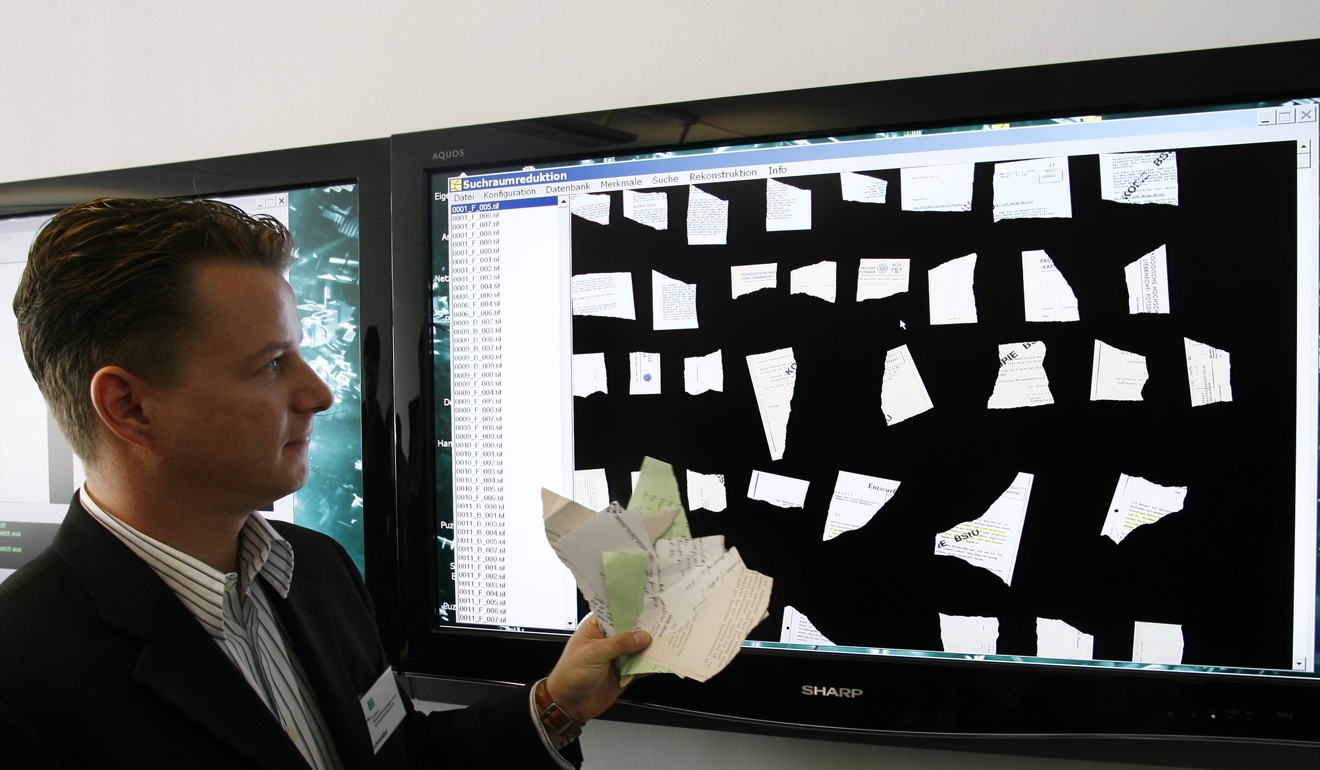That’s torn it: hi-tech bid to reconstruct shredded Stasi files, world’s biggest jigsaw puzzle, hits a snag
Related topics
Archivists in Germany are losing hope of being able to solve the world’s biggest jigsaw puzzle, as technology is struggling to piece together hundreds of thousands of Stasi files ripped to shreds in the dying days of the East German regime.
The government-funded Stasi records agency confirmed this week that it had to halt an 8 million Euro (US$9.6 million) project to digitally reassemble the contents of 23 bags stuffed with torn-up documents detailing the activity of the secret police, because the scanning hardware it was using was not advanced enough.
Over the 60-year existence of communist East Germany, the state security ministry built one of the most tightly knit surveillance states in recent history, with historians calculating one Stasi informant per 6.5 citizens.
After German reunification in 1990 an archive was set up to allow the system’s victims to access their records, but stacks of paperwork were shredded or ripped up by hand to cover up the regime’s activity. Some researchers estimate that 10-40 per cent of the archive’s contents may be lost to history.
Since 1995 workers employed by the agency have managed to piece together more than 1.5 million pages of destroyed files by hand, shedding light on East Germany’s use of doping in sports, links between the Stasi and West Germany’s Red Army Faction terrorist group, and the persecution of writers critical of the regime.
But workers have struggled with files that were torn up more than four times. “Once you have nine snippets per A4 sheet of paper, the human brain really can’t keep up”, said Dagmar Hovestädt, the spokesperson for the Stasi Records Agency.
A so-called ePuzzler, working with an algorithm developed by the Fraunhofer Institute and costing about 8 million Euro of federal funds, has managed to digitally reassemble about 91,000 pages since 2013. However, it has recently run into trouble.
For the last two years, the Stasi Records Agency has been waiting for engineers to develop more advanced hardware that can scan in smaller snippets, some of which are only the size of a fingernail.
The ePuzzler works by detecting the outline of the torn-up page rather than its content. It has struggled with files that were folded before being torn, thus leaving several snippets with near-identical outlines.
“We currently don’t have a scanner that we can work with”, said Hovestädt, adding that her agency was hopeful that technological progress would allow the archive to resume reassembling destroyed records this year.
In the meantime, a small team of manual puzzlers continue their work of matching up more crudely ripped files by hand.































Comments: